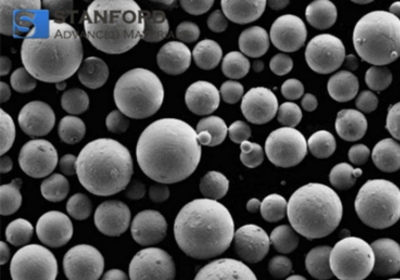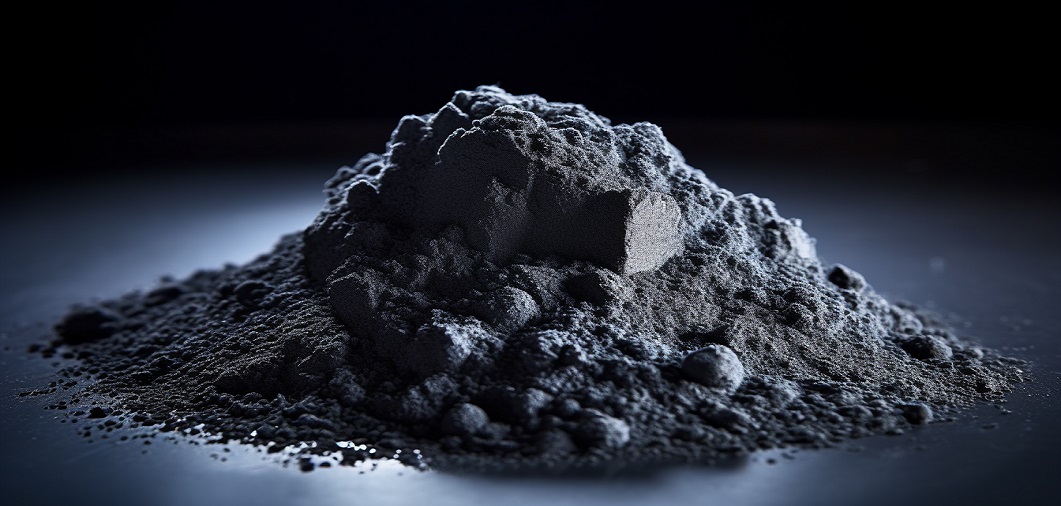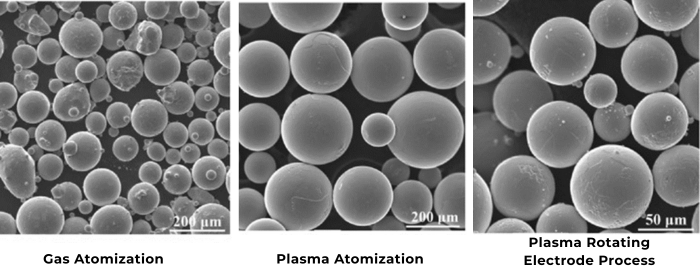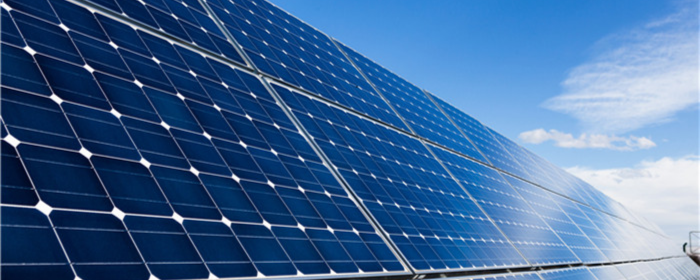

High-entropy alloys (HEAs) are composed of multiple metal elements. Through their unique compositional strategy, these materials exhibit outstanding properties that surpass traditional alloys. The different proportions of elements give HEA powders diverse characteristics, making them highly promising in various industrial fields. But which HEA powder should be chosen to meet specific industrial needs?
We have identified 12 key performance dimensions and organized a list of representative HEA powders, hoping to provide valuable insights for practical applications.

Fig 1. High-Entropy Alloy Powders
The CoCrFeMnNi alloy powder, also known as the "Cantor Alloy," is a pioneering material in HEAs. It consists of five elements in equal atomic proportions and shows excellent mechanical properties and thermal stability at both room temperature and high temperatures. As a classic HEA, CoCrFeMnNi has good ductility, oxidation resistance, and phase stability and is widely used in aerospace and high-temperature structural materials.
HfNbTaTiZr alloy powder is composed of several refractory metals. The addition of these elements gives the alloy a very high melting point and excellent high-temperature strength. It also demonstrates remarkable creep resistance at high temperatures. Due to its outstanding thermal stability and oxidation resistance, this alloy powder is widely applied in high-temperature environments like turbine blades in jet engines and gas turbines, where it can withstand extreme working conditions.

Fig 2. HfNbTaTiZr High Entropy Alloy Powder
FeCoCrNiMo alloy powder contains molybdenum, which significantly enhances its corrosion resistance. Molybdenum in the alloy forms a stable oxide layer that effectively prevents corrosion from acidic and alkaline media. This alloy powder stands out in its resistance to seawater and harsh environments, making it highly applicable in marine engineering and chemical equipment.
CrNbTiVZr alloy powder is composed of multiple high-hardness elements, giving it high hardness and excellent wear resistance. The addition of titanium and chromium increases the surface hardness of the alloy powder, while vanadium and zirconium further improve its wear resistance. This alloy powder is ideal for high-wear environments, such as the manufacture of tools, molds, and bearings.
AlCoCrFeNi alloy powder incorporates aluminum, which gives the alloy very high strength and hardness while maintaining a low density. The presence of aluminum not only reduces the alloy's density but also strengthens its matrix structure, significantly improving its mechanical strength. This makes AlCoCrFeNi an ideal choice for lightweight and high-strength structural materials in aerospace.
TiZrHfNbTa alloy powder has outstanding toughness, especially at low temperatures, where it maintains good ductility and resistance to fracture. This high toughness is primarily due to the addition of titanium and zirconium, making it highly resistant to fracture under impact loads. It is well-suited for applications in extremely low temperatures and impact environments.
AlLiMgScTi alloy powder is primarily composed of lightweight elements such as aluminum, lithium, and magnesium, which significantly reduce its density. Despite its low weight, this alloy still has high strength and rigidity, making it ideal for applications in aerospace, where lightweight and high-strength materials are required.
HfNbTaTiZr alloy powder demonstrates excellent resistance to radiation in high-radiation environments. The refractory elements in this alloy powder have high atomic masses and stable crystal structures, enabling them to effectively resist radiation damage.
The combination of aluminum and chromium in AlCoCrFeNi alloy powder provides excellent oxidation resistance at high temperatures. Aluminum forms a dense protective oxide layer, while chromium offers additional oxidation protection. This alloy is particularly suitable for high-temperature oxidation environments, such as engine components and furnace materials.
CuNiFeCoCr alloy powder includes copper, giving it high electrical conductivity while retaining good mechanical properties. Copper is a well-known high-conductivity element, and the combination of nickel and iron provides strength. This alloy is ideal for applications that require both high conductivity and some mechanical strength, such as electrical contacts and electronic device casings.
CoCrFeMnNi alloy powder forms a stable solid solution due to its equal atomic proportions of multiple elements. This stable structure avoids the segregation and brittle phases commonly found in traditional alloys. It exhibits excellent phase stability in high-temperature, high-pressure, and corrosive environments. This stability makes it a reliable structural material in aerospace applications.
TiZrHfNbTa alloy powder is composed of elements known for their toughness, such as titanium, zirconium, hafnium, niobium, and tantalum. These elements combine to give the alloy high impact resistance, allowing it to effectively absorb energy under high dynamic stress without brittle fracture. It is especially suitable for aerospace and engineering structures, where impact resistance and reliability are crucial.
High-entropy alloy powders, with their diverse compositions and multi-functional properties, stand out in modern material science. These alloys demonstrate great potential in fields like aerospace, energy, marine engineering, and electronics. As research advances and manufacturing techniques improve, HEA powders are expected to further expand their application areas, becoming representatives of a new generation of high-performance materials.
Stamford Advanced Materials (SAM) is committed to providing high quality spherical alloy powders to customers in the industrial sector. We offer a wide range of HEA spherical powders to meet the needs of a variety of additive manufacturing, aerospace and other diverse processes.
Table 1. Summary of the 12 Most Exceptional High-Entropy Alloy Powders
|
Item |
HEA Powder |
Application |
|
Most Classic |
CoCrFeMnNi |
Aerospace and high-temperature structural materials |
|
Most Heat-Resistant |
Turbine blades in jet engines and gas turbines |
|
|
Most Corrosion-Resistant |
FeCoCrNiMo |
Marine engineering and chemical equipment |
|
Most Wear-Resistant |
CrNbTiVZr |
Manufacture of tools, molds, and bearings |
|
Strongest |
AlCoCrFeNi |
High-strength structural materials in aerospace |
|
Toughest |
TiZrHfNbTa |
Extremely low temperatures and impact environments |
|
Lightest |
AlLiMgScTi |
Aerospace |
|
Most Oxidation-Resistant |
AlCoCrFeNi |
Engine components and furnace materials |
|
Highest Conductivity |
CuNiFeCoCr |
Electrical contacts and electronic device casings |
|
Most Stable |
CoCrFeMnNi |
Aerospace |
|
Most Impact-Resistant |
TiZrHfNbTa |
Aerospace and engineering structures |







